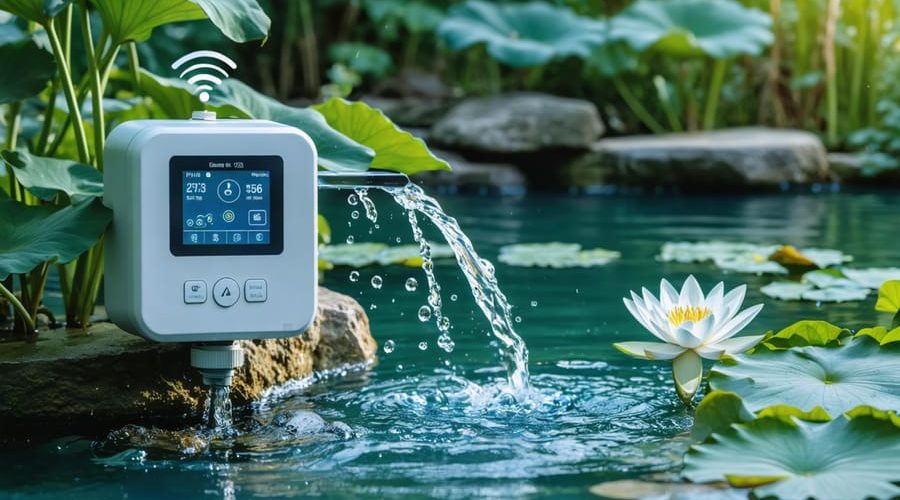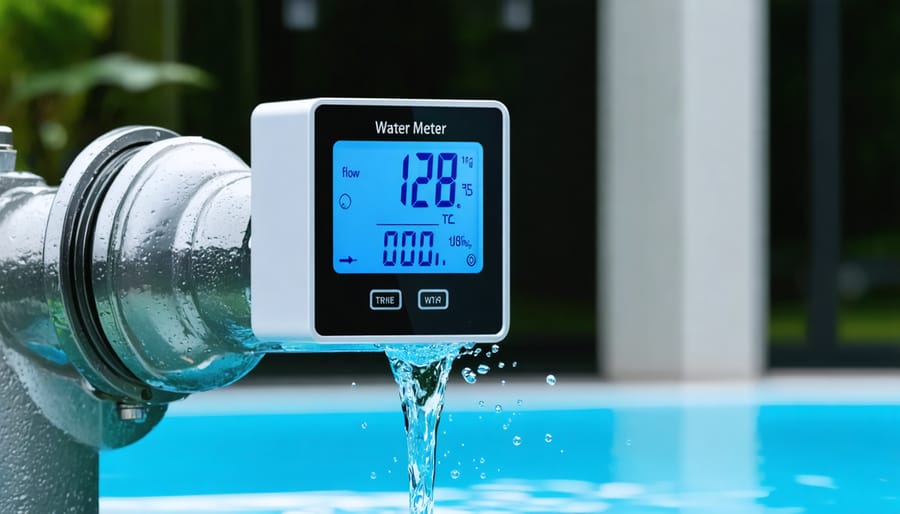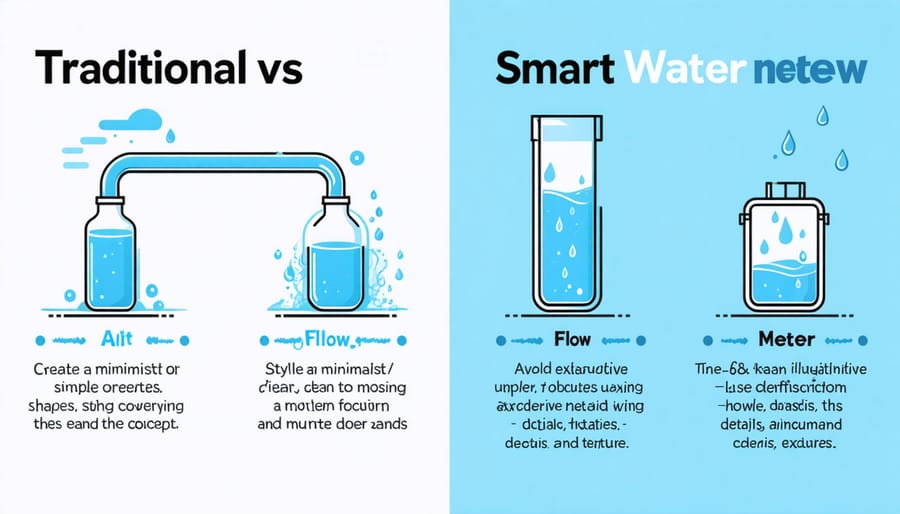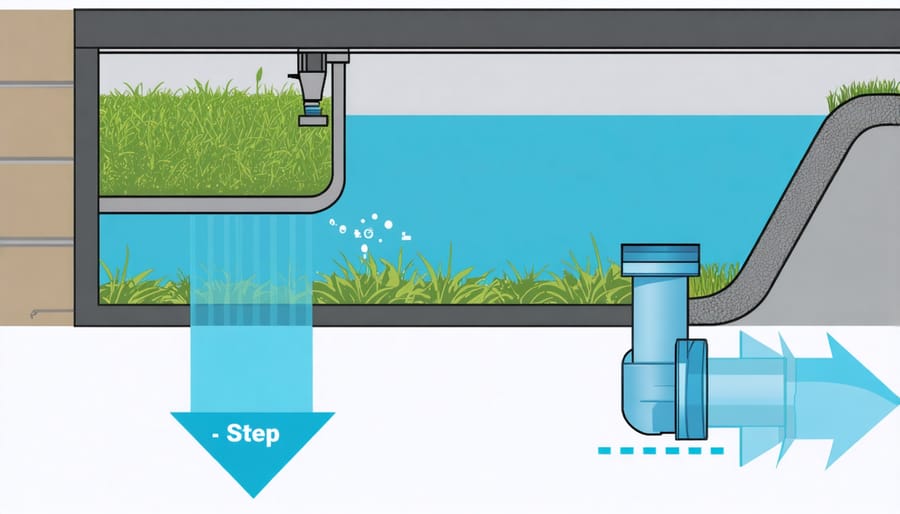
Smart Water Flow Meters: Your Secret Weapon for Perfect Pond Management
Transform your water management with smart flow meters – the game-changing technology that’s revolutionizing how we monitor and conserve water in modern water features. As a crucial component of pond maintenance essentials, these intelligent devices deliver real-time data about water usage, detect leaks instantly, and help optimize flow rates for better efficiency.
Gone are the days of guessing about water consumption or discovering costly leaks too late. Smart water flow meters combine precision sensors with wireless connectivity to provide instant alerts on your smartphone, making water management effortless and precise. Whether you’re maintaining a backyard pond, operating decorative fountains, or managing multiple water features, these smart devices offer unprecedented control and peace of mind.
Best of all, today’s smart meters are more accessible than ever, with user-friendly interfaces and straightforward installation processes that even DIY enthusiasts can handle. They’re not just tools – they’re investments that pay for themselves through water conservation and early problem detection.
What Makes a Water Flow Meter ‘Smart’?
Key Features of Smart Flow Meters
Smart flow meters pack an impressive array of features that make water management a breeze for pond and water feature enthusiasts. The standout capability is wireless connectivity, which lets you monitor your water flow right from your smartphone or tablet. No more trudging out in the rain to check readings!
Real-time monitoring is another game-changer. These clever devices give you instant feedback about water flow rates, helping you spot problems like leaks or pump issues before they become serious. Think of it as having a watchful eye on your water feature 24/7.
The built-in data logging feature is particularly handy. Your smart meter keeps track of water usage patterns over time, storing this information for later analysis. This helps you understand your water feature’s typical behavior and spot unusual changes that might need attention.
Many models also include customizable alerts. You can set up notifications for things like sudden flow changes or unusual usage patterns. Some advanced meters even integrate with home automation systems, letting you control pumps and other equipment automatically based on flow readings.
Most importantly, these features work together to help you save water and maintain your water feature more efficiently. It’s like having a knowledgeable assistant keeping watch over your pond or fountain at all times!

How They Compare to Traditional Meters
Unlike traditional water meters that just show basic flow readings, smart water flow meters bring your pond management into the digital age. They offer real-time monitoring through smartphone apps, letting you track water usage patterns from anywhere. While conventional meters need manual checking, smart meters automatically record and store data, making it easier to spot leaks or unusual consumption patterns.
Traditional meters can’t alert you to problems, but smart meters send instant notifications when they detect issues like sudden flow changes or potential pipe bursts. They’re also more accurate than their mechanical counterparts, which can lose precision over time due to wear and tear. Though smart meters cost more upfront, they often pay for themselves through better water management and early problem detection.
The only downside? Smart meters need power and internet connectivity, while traditional meters work without any external requirements.

Benefits for Your Water Feature
Leak Detection and Prevention
Smart water flow meters excel at helping you identify and fix pond leaks before they become major problems. These devices continuously monitor water flow patterns, detecting unusual changes that might indicate a leak. When water flow exceeds normal patterns or shows constant movement during typically inactive periods, the meter sends instant alerts to your smartphone or control panel.
Many smart meters use machine learning to understand your typical water usage patterns, making their leak detection increasingly accurate over time. They can spot even tiny leaks by detecting persistent low-level water flow, which might otherwise go unnoticed for weeks. Some advanced models can even estimate the leak’s size and location, making repairs much easier and faster. This proactive approach to leak detection helps protect your pond ecosystem and saves money on water bills.
Water Conservation
Smart water flow meters are game-changers when it comes to saving water in your pond or water feature. These clever devices help you spot leaks instantly, rather than waiting for a surprise spike in your water bill. By monitoring real-time usage, you can quickly identify if your water feature is using more water than usual, which might indicate a hidden leak or inefficient pump operation.
Many smart meters come with mobile apps that send alerts when unusual patterns are detected, helping you maintain optimal water levels without waste. They can also track seasonal usage patterns, allowing you to adjust your water feature’s operation based on weather conditions and evaporation rates. Some advanced models even integrate with automated systems to adjust flow rates automatically, ensuring you’re never using more water than necessary.
These meters also help create better water management habits by providing detailed usage reports and conservation tips specific to your setup.
Maintenance Scheduling
Smart flow meters make maintenance a breeze by helping you catch potential problems before they become major headaches. By monitoring your water flow patterns, these devices can alert you when something’s not quite right. For example, a sudden drop in flow might indicate a clog forming, while unusual spikes could mean a leak needs attention.
Many smart meters come with apps that learn your typical usage patterns and send notifications when it’s time for routine maintenance. They can even predict when parts might need replacement based on their age and performance data. This predictive approach helps you plan ahead, saving both time and money on repairs.
For pond owners, this means fewer surprises and more consistent water feature performance. You can schedule cleaning and maintenance during convenient times rather than dealing with unexpected breakdowns. Plus, regular monitoring helps extend the life of your pumps and other equipment.
Installation and Setup Made Simple

Choosing the Right Location
Proper placement of your smart water flow meter is crucial for accurate readings and optimal performance. The ideal location should be easily accessible for maintenance while being integrated seamlessly into your pond plumbing system. Install the meter in a straight section of pipe, avoiding bends or joints within 5 pipe diameters upstream and 3 pipe diameters downstream. This ensures smooth water flow and prevents turbulence that could affect readings.
Choose a spot protected from direct sunlight and extreme weather conditions to prolong the meter’s lifespan. If you’re installing the meter outdoors, consider using a weatherproof housing or cover. The display should be easily visible for regular monitoring, and if your meter has wireless capabilities, ensure it’s within range of your home’s Wi-Fi network.
For best results, mount the meter horizontally with the display facing upward. This orientation helps prevent air pockets and ensures consistent measurements.
Connection and Configuration
Setting up your smart water flow meter is a straightforward process that anyone can handle. Start by turning off your water supply at the main valve. Remove the existing meter or pipe section where you’ll install the new smart meter, ensuring you have the correct pipe fittings for your setup.
Position the smart meter following the flow direction arrow on its body. Connect the inlet and outlet sides using the provided fittings, making sure all connections are watertight. Most meters come with threaded ends for easy installation.
Next, download the manufacturer’s app on your smartphone and create an account. Power up your smart meter and follow the app’s instructions to connect it to your home’s Wi-Fi network. The app will guide you through the final configuration steps, including setting up alerts and monitoring preferences.
Before finishing, turn the water back on slowly and check for any leaks. Monitor the app for a few minutes to ensure proper data transmission and accuracy.
Getting the Most from Your Smart Meter
To get the most value from your smart water flow meter, start by setting up custom alerts for unusual flow patterns. This helps you catch potential leaks or system malfunctions early. Take time to learn your typical usage patterns – most smart meters come with apps that show daily, weekly, and monthly consumption trends.
Make sure to regularly check and update your meter’s software when available. These updates often include new features and security improvements that can enhance your monitoring capabilities. Consider connecting your smart meter to your home automation system if possible, allowing for more integrated control of your water features.
Keep your sensor areas clean and free from debris to ensure accurate readings. While smart meters are generally low-maintenance, occasional cleaning of the external housing will prevent buildup that could affect performance. If your meter has a battery-powered component, set a reminder to check the battery status every six months.
Take advantage of the historical data feature to optimize your water usage. By analyzing patterns over time, you can adjust your water feature’s schedule for maximum efficiency. Many smart meters also offer temperature and weather integration – use this to automatically adjust flow rates based on environmental conditions.
Remember to share access with family members or maintenance personnel through the app, ensuring everyone who needs to monitor the system can do so. Finally, consider exporting your usage data periodically for long-term record-keeping and analysis.
Smart water flow meters represent a significant leap forward in water feature management, offering precise control and invaluable insights into your system’s performance. By implementing this technology, you’ll not only save water and reduce costs but also ensure your water features operate at their best. The convenience of real-time monitoring, automated alerts, and detailed usage reports makes these devices an essential tool for any water feature enthusiast. Whether you’re a beginner or experienced pond owner, the benefits of smart flow meters are clear: better maintenance, enhanced efficiency, and peace of mind. Consider taking the step toward smarter water management today – your pond and wallet will thank you for it. Remember, sustainable water usage isn’t just about conservation; it’s about creating beautiful, efficient water features that bring joy for years to come.
